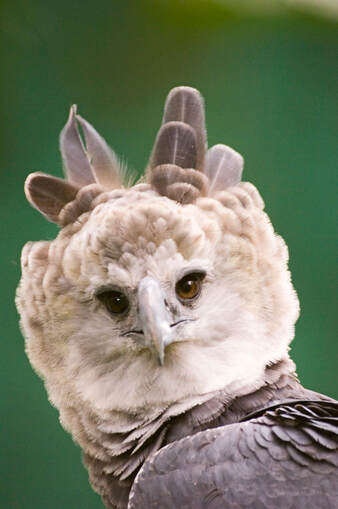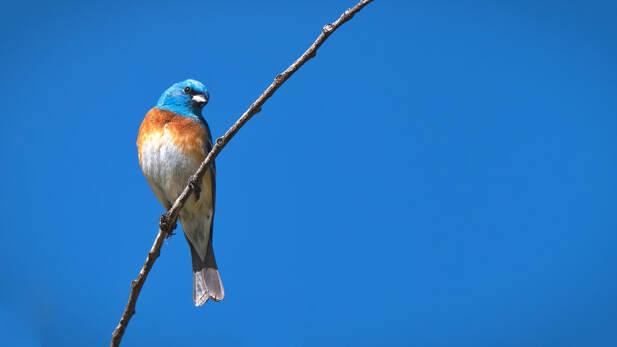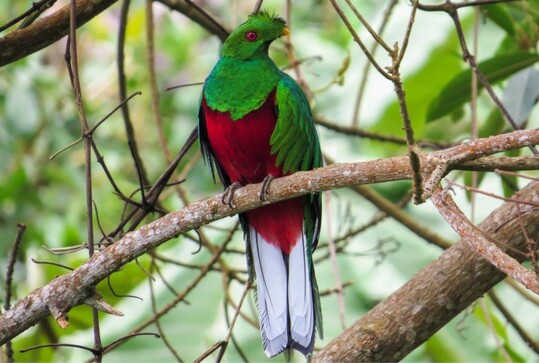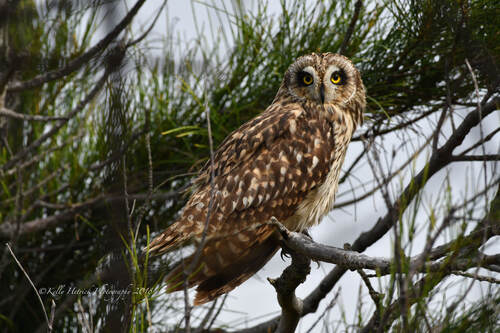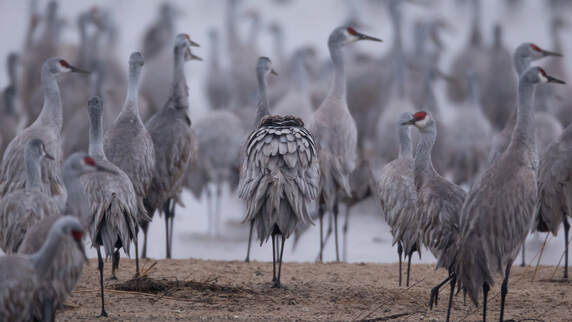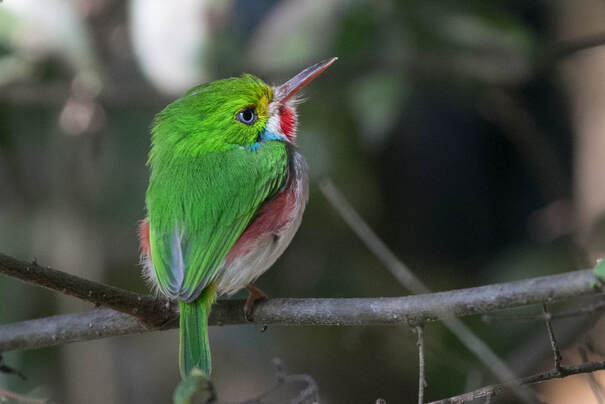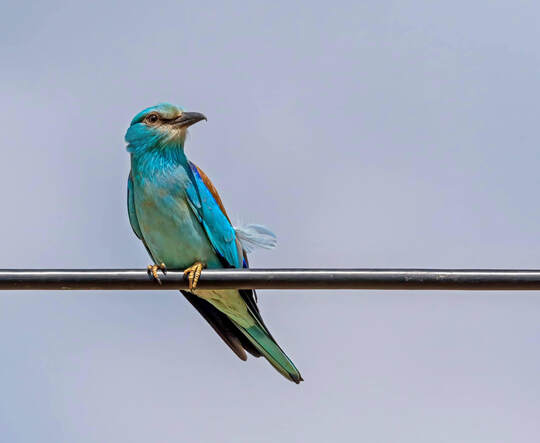Above: Birds Georgia Trip to Maine with Mt. Khatahdin in the background.
travel with BIRDS georgia
Birds Georgia was founded to foster the joy of birding and to protect bird-friendly habitat around the state. In the decades since our founding, the organization has evolved into one of Georgia's leading conservation and education organizations. The Birds Georgia Travel Program strengthens current goals to protect the region's birds by instilling a love of nature that will impact conservation, education, and community engagement on a local level.
Birds Georgia's Travel Program offers small-group travel with knowledgeable guides to exciting regional, domestic, and international locations. Special care is taken to develop custom itineraries for each tour that will appeal to all levels of bird and nature enthusiasts.
Current members of Birds Georgia and subscribers to our twice-monthly BirdBuzz e-newsletter receive the latest information related to upcoming trips and registration dates. Join Birds Georgia as a member (or renew your membership) or subscribe to the BirdBuzz e-newsletter to stay up to date.
Birds Georgia's Travel Program offers small-group travel with knowledgeable guides to exciting regional, domestic, and international locations. Special care is taken to develop custom itineraries for each tour that will appeal to all levels of bird and nature enthusiasts.
Current members of Birds Georgia and subscribers to our twice-monthly BirdBuzz e-newsletter receive the latest information related to upcoming trips and registration dates. Join Birds Georgia as a member (or renew your membership) or subscribe to the BirdBuzz e-newsletter to stay up to date.
upcoming trips
COVID-19 Travel Update: Until further notice, all participants in the Birds Georgia Travel Program must be fully vaccinated and boosted against COVID-19 at the time of their travel date. According to the CDC, individuals are considered fully vaccinated when they have received their primary series of COVID-19 vaccine and at least one booster. If you are unable or unwilling to comply with the COVID-19 travel precautions, please do not register for this event at this time. Participants will also be expected to adhere to all travel guidelines and restrictions at the destination at the time of travel.
HARPY EAGLES AND THE BEST OF PANAMA WITH THE CANOPY FAMILY
May 29 to June 8, 2024
This trip is now full. Please join the wait list below. We will contact you if a space opens and will collect your payment at that time.
Trip Leader: Melanie Furr, Director of Education
Member Price: $4,600/person*
Non-member price: $4,650*, includes one-year Birds Georgia membership
Single Supplement: $600
*Based on double occupancy and 8 participants. See more details below if travelling solo.
Minimum tour participants: 8
Maximum tour participants: 11
Panama offers some of the best birding in North America, and the Canopy Family Properties are world-renowned eco-lodges in some of Panama’s most biodiverse areas. During this trip we will visit all three Canopy Family properties. Our first stop at the Canopy Lodge, nestled in the cloud forests of Cerro Gaital Natural Monument, will be the highest elevation stop on the tour, where our focus will be on the unique species that call this area home. Next, we’ll visit the Canopy Tower, a former US Air Force radar tower in the midst of Soberania National Park, which has a huge diversity of birds and many new species for the tour. Our final stop will be at the amazing Canopy Camp in Darien, one of the least explored parts of Central America, where our targets will be Harpy and Crested Eagles, in addition to other incredible birds right outside the lodge.
Canopy Lodge May 29 to June 1, 2024 (3 nights)
Canopy Tower June 1 to 4, 2024 (3 nights)
Canopy Camp June 4 to 8, 2024 (4 nights)
Lodging Note: Tour price is based on double occupancy. Depending on group construction, single travelers may be asked to pay a single supplement if we are unable to pair you with another guest. All efforts will be made to pair individuals to avoid this expense, though it cannot be guaranteed. Impacted travelers, should they decide to cancel, will be reimbursed following the cancellation policy below.
Member Price: $4,600/person*
Non-member price: $4,650*, includes one-year Birds Georgia membership
Single Supplement: $600
*Based on double occupancy and 8 participants. See more details below if travelling solo.
Minimum tour participants: 8
Maximum tour participants: 11
Panama offers some of the best birding in North America, and the Canopy Family Properties are world-renowned eco-lodges in some of Panama’s most biodiverse areas. During this trip we will visit all three Canopy Family properties. Our first stop at the Canopy Lodge, nestled in the cloud forests of Cerro Gaital Natural Monument, will be the highest elevation stop on the tour, where our focus will be on the unique species that call this area home. Next, we’ll visit the Canopy Tower, a former US Air Force radar tower in the midst of Soberania National Park, which has a huge diversity of birds and many new species for the tour. Our final stop will be at the amazing Canopy Camp in Darien, one of the least explored parts of Central America, where our targets will be Harpy and Crested Eagles, in addition to other incredible birds right outside the lodge.
Canopy Lodge May 29 to June 1, 2024 (3 nights)
Canopy Tower June 1 to 4, 2024 (3 nights)
Canopy Camp June 4 to 8, 2024 (4 nights)
Lodging Note: Tour price is based on double occupancy. Depending on group construction, single travelers may be asked to pay a single supplement if we are unable to pair you with another guest. All efforts will be made to pair individuals to avoid this expense, though it cannot be guaranteed. Impacted travelers, should they decide to cancel, will be reimbursed following the cancellation policy below.
Montana: Where the Mountains Meet the Plains
June 2 to 8, 2024
(optional Cassia Crossbill extension June 8 to 10)
(optional Cassia Crossbill extension June 8 to 10)
Birds Georgia Host: Dottie Head, Director of Communications
Local Guide: Adam Sell, Red Hill Birding (2nd guide and van will be added for >6 participants)
Group Size: Maximum group size of 13 participants
Georgia Audubon Member Price: $3,500* per person
Non-member Price: $3,550* per person (includes a one-year Birds Georgia membership)
Single Supplement: +$730
Optional Cassia Crossbill Extension (June 8 to 10): +$1200* per person (member and non-member price)
Extension Group Size: Minimum 4 participants / Maximum 13 participants
Extension Single Supplement: +$176
*Based on double occupancy and 8 participants. Trip can run at an elevated cost for 6 to 7 participants.
Lodging Note: Depending on group construction, single travelers may be asked to pay a single supplement if we are unable to pair you with another guest. All efforts will be made to pair individuals to avoid this expense, though it cannot be guaranteed. Impacted travelers, should they decide to cancel, will be reimbursed following the cancellation policy below.
Where the Great Plains meet the grandiose peaks of the Rocky Mountains is a place known as Big Sky Country: a land where the vistas are surpassed only by the birds that inhabit them. In the expansive grasslands we will look for Baird’s Sparrow, Sprague’s Pipit, Mountain Plover, Long-billed Curlew, Ferruginous Hawk, Lark Bunting, and McCown’s and Chestnut-collared Longspurs. These grasslands abut grand, snow-capped mountains, with a totally different but equally alluring set of birds, including Black Rosy-Finch, American Three-toed Woodpecker, Dusky Grouse, and Clark’s Nutcracker. We will also visit wetlands that will be crowded with breeding waterbirds, including a wide variety of ducks and grebes and a cacophony of Yellow-headed Blackbirds. We will also pass through Yellowstone National Park, giving us a chance to see some of the West’s iconic mammals.
This short trip will find some of North America’s most highly-sought species on their breeding grounds. Bozeman is a great jumping-off point if you would like to visit Yellowstone National Park or Grand Teton National Park before or after the birding trip. We also offer a two-night extension to look for the recently described Cassia Crossbill in neighboring Idaho.
Local Guide: Adam Sell, Red Hill Birding (2nd guide and van will be added for >6 participants)
Group Size: Maximum group size of 13 participants
Georgia Audubon Member Price: $3,500* per person
Non-member Price: $3,550* per person (includes a one-year Birds Georgia membership)
Single Supplement: +$730
Optional Cassia Crossbill Extension (June 8 to 10): +$1200* per person (member and non-member price)
Extension Group Size: Minimum 4 participants / Maximum 13 participants
Extension Single Supplement: +$176
*Based on double occupancy and 8 participants. Trip can run at an elevated cost for 6 to 7 participants.
Lodging Note: Depending on group construction, single travelers may be asked to pay a single supplement if we are unable to pair you with another guest. All efforts will be made to pair individuals to avoid this expense, though it cannot be guaranteed. Impacted travelers, should they decide to cancel, will be reimbursed following the cancellation policy below.
Where the Great Plains meet the grandiose peaks of the Rocky Mountains is a place known as Big Sky Country: a land where the vistas are surpassed only by the birds that inhabit them. In the expansive grasslands we will look for Baird’s Sparrow, Sprague’s Pipit, Mountain Plover, Long-billed Curlew, Ferruginous Hawk, Lark Bunting, and McCown’s and Chestnut-collared Longspurs. These grasslands abut grand, snow-capped mountains, with a totally different but equally alluring set of birds, including Black Rosy-Finch, American Three-toed Woodpecker, Dusky Grouse, and Clark’s Nutcracker. We will also visit wetlands that will be crowded with breeding waterbirds, including a wide variety of ducks and grebes and a cacophony of Yellow-headed Blackbirds. We will also pass through Yellowstone National Park, giving us a chance to see some of the West’s iconic mammals.
This short trip will find some of North America’s most highly-sought species on their breeding grounds. Bozeman is a great jumping-off point if you would like to visit Yellowstone National Park or Grand Teton National Park before or after the birding trip. We also offer a two-night extension to look for the recently described Cassia Crossbill in neighboring Idaho.
summer birding in colorado
July 8 to 13, 2024
This trip is now full. Please join the wait list below. We will contact you if a space opens and will collect your payment at that time.
Birds Georgia Guide: Adam Betuel, Director of Conservation
Additional Guides: George Armistead (Hillstar Nature) and Carl Bendorf (Colorado Birding Adventures)
Group Size: Maximum 9 participants
Member Price: $3,530/person*
Non-member Price: $3,580/person* (includes a one-year Birds Georgia membership)
Single Supplement: +$495
*Based on double occupancy
With an impressive variety of habitats, fantastic mountain scenery, and a bird list (519 species) that ranks in the top ten of all states (impressive considering the nearest ocean is 800 miles!), Colorado is on most birder’s list of places to visit. Throw in warm sunny days, cool nights, low humidity, and relatively few bugs, and Colorado is the ideal summer birding destination.
Our key birding spots include two of the top birding hotspots in North America: Rocky Mountain National Park and Pawnee National Grassland. Despite being only 75 miles apart, the 7,000-foot difference in elevation between these two places creates a wealth of habitat variety and a long list of Western species.
This tour’s target list includes White-tailed Ptarmigan, Western & Clark’s Grebe, Mountain Plover, Williamson’s and Red-naped Sapsucker, American Three-toed and Lewis’s Woodpeckers, Pinyon Jay, Clark’s Nutcracker, Brown-capped Rosy-finch, Chestnut-collared and Thick-billed Longspur, Lark Bunting, MacGillivray’s Warbler, Lazuli Bunting, and much more.
Join Georgia Audubon, Hillstar Nature, and Colorado Birding Adventures for this fantastic tour.
Additional Guides: George Armistead (Hillstar Nature) and Carl Bendorf (Colorado Birding Adventures)
Group Size: Maximum 9 participants
Member Price: $3,530/person*
Non-member Price: $3,580/person* (includes a one-year Birds Georgia membership)
Single Supplement: +$495
*Based on double occupancy
With an impressive variety of habitats, fantastic mountain scenery, and a bird list (519 species) that ranks in the top ten of all states (impressive considering the nearest ocean is 800 miles!), Colorado is on most birder’s list of places to visit. Throw in warm sunny days, cool nights, low humidity, and relatively few bugs, and Colorado is the ideal summer birding destination.
Our key birding spots include two of the top birding hotspots in North America: Rocky Mountain National Park and Pawnee National Grassland. Despite being only 75 miles apart, the 7,000-foot difference in elevation between these two places creates a wealth of habitat variety and a long list of Western species.
This tour’s target list includes White-tailed Ptarmigan, Western & Clark’s Grebe, Mountain Plover, Williamson’s and Red-naped Sapsucker, American Three-toed and Lewis’s Woodpeckers, Pinyon Jay, Clark’s Nutcracker, Brown-capped Rosy-finch, Chestnut-collared and Thick-billed Longspur, Lark Bunting, MacGillivray’s Warbler, Lazuli Bunting, and much more.
Join Georgia Audubon, Hillstar Nature, and Colorado Birding Adventures for this fantastic tour.
Northern ColOmbia: Endemics from the Mountain Tops to the Sea
July 24 to August 6, 2024
This trip is now full. Please join the wait list below. We will contact you if a space opens and will collect your payment at that time.
This trip is now full. Please join the wait list below. We will contact you if a space opens and will collect your payment at that time.
Birds Georgia Leader: Adam Betuel, Director of Conservation
Local Guide: Diego Calderon (COLOMBIA Birding & The Birders Show)
Group Size: 10 people (can be run with a smaller group at an elevated price)
Member price: $7,150*
Non-member price: $7,200 * (Includes a one-year Birds Georgia membership)
Single supplement for non-shared hotel room: $670/person
*Based on double occupancy. See more details below if traveling solo
*Sharing of a room is almost a certainty at one location. More info on Day 2 in trip description.
Lodging Note: Depending on group construction, single travelers may be asked to pay a single supplement if we are unable to pair you with another guest. All efforts will be made to pair individuals to avoid this expense, though it cannot be guaranteed. Impacted travelers, should they decide to cancel, will be reimbursed following the cancellation policy below.
Colombia is the epicenter of avian diversity. No country on the planet has more species than Colombia (1900+) despite it only being around 1/9 the size of the United States. With multiple cordilleras of the Andes, the Santa Marta Mountains, two coastlines, the Amazon, and so much more interesting biogeography, it is no wonder why. This two-week trip focuses on the northern portion of the country, it’s mountain ranges, and the rich Caribbean lowlands. We will spend multiple days on the Sierra Nevada de Santa Marta which are the tallest coastal mountains in the world and the planet’s single most important and irreplaceable site for threatened and endemic biodiversity. Additionally, we will spend time on the Serranía de Perijá, the northernmost extent of the Andes. These mountains also host a high level of endemism and offer the chance for true discovery. Down on the coast, our main destination will be the Guajira Peninsula and its dry forest and coastal wetlands. Apart from these truly unforgettable destinations and all the bird-rich stops in between, we will close out this tour with a visit to the historic city of Cartagena. Strolling down the colorful and lively streets will be a great way to bring our time in Colombia to a close!
For this trip, conservation director Adam Betuel will once again team up with Diego Calderon, one of the original and top bird guides in all of Colombia. In addition to his guiding work at COLOMBIA Birding, Diego is the cohost of The Birders Show. During this tour, one can expect to see snow-capped peaks, lush mountainsides, the Caribbean Sea, off-the-beaten path locales, lively culture, historic cities, in addition to three hundred plus different species of birds and other unique wildlife. With its unfathomable diversity, enticing culture, and safety over recent years, it is no wonder why Colombia has become one of the world’s most desirable birding destinations on the planet. Join us!
Local Guide: Diego Calderon (COLOMBIA Birding & The Birders Show)
Group Size: 10 people (can be run with a smaller group at an elevated price)
Member price: $7,150*
Non-member price: $7,200 * (Includes a one-year Birds Georgia membership)
Single supplement for non-shared hotel room: $670/person
*Based on double occupancy. See more details below if traveling solo
*Sharing of a room is almost a certainty at one location. More info on Day 2 in trip description.
Lodging Note: Depending on group construction, single travelers may be asked to pay a single supplement if we are unable to pair you with another guest. All efforts will be made to pair individuals to avoid this expense, though it cannot be guaranteed. Impacted travelers, should they decide to cancel, will be reimbursed following the cancellation policy below.
Colombia is the epicenter of avian diversity. No country on the planet has more species than Colombia (1900+) despite it only being around 1/9 the size of the United States. With multiple cordilleras of the Andes, the Santa Marta Mountains, two coastlines, the Amazon, and so much more interesting biogeography, it is no wonder why. This two-week trip focuses on the northern portion of the country, it’s mountain ranges, and the rich Caribbean lowlands. We will spend multiple days on the Sierra Nevada de Santa Marta which are the tallest coastal mountains in the world and the planet’s single most important and irreplaceable site for threatened and endemic biodiversity. Additionally, we will spend time on the Serranía de Perijá, the northernmost extent of the Andes. These mountains also host a high level of endemism and offer the chance for true discovery. Down on the coast, our main destination will be the Guajira Peninsula and its dry forest and coastal wetlands. Apart from these truly unforgettable destinations and all the bird-rich stops in between, we will close out this tour with a visit to the historic city of Cartagena. Strolling down the colorful and lively streets will be a great way to bring our time in Colombia to a close!
For this trip, conservation director Adam Betuel will once again team up with Diego Calderon, one of the original and top bird guides in all of Colombia. In addition to his guiding work at COLOMBIA Birding, Diego is the cohost of The Birders Show. During this tour, one can expect to see snow-capped peaks, lush mountainsides, the Caribbean Sea, off-the-beaten path locales, lively culture, historic cities, in addition to three hundred plus different species of birds and other unique wildlife. With its unfathomable diversity, enticing culture, and safety over recent years, it is no wonder why Colombia has become one of the world’s most desirable birding destinations on the planet. Join us!
HAWAII: BIRDING THE ALOHA WAY
October 1 to 9, 2024
This trip is now full. Please join the wait list below. We will contact you if a space opens and will collect your payment at that time.
This trip is now full. Please join the wait list below. We will contact you if a space opens and will collect your payment at that time.
Guide: Adam Betuel (Birds Georgia), Mandy Talpas (Hawaii Bird Tours)
Group Size: 7 people maximum
Fees:
Member: $8,750*
Non-member: $8,800* (Includes a one-year Birds Georgia membership)
Single supplement for non-shared hotel room: $1,325/person
*Based on double occupancy and 7 participants. See more details below if traveling solo
For many, Hawaii is synonymous with paradise. Crystal blue water, lush montane forests, diverse landscapes, and the smell of plumeria flowers make this island archipelago, the most isolated in the world, intriguing to travelers. These volcanic islands are home to another alluring characteristic for Auduboners, a unique and complicated avifauna. Hawaii is home to over 40 endemic bird species, most of which are beautiful, very local, and greatly endangered. Honeycreepers dominate this group, rainbow colored descendants of a single finch ancestor. It is also a place to find a plethora of seabirds, many of which are difficult to find elsewhere in the United States. In addition to the stunning native bird life, Hawaii has proven to be a haven for many nonnative bird species, introduced from all stretches of the globe. With its addition to the American Birding Association list, many of these species are now countable for those who keep a US/ABA list.
On this nine-day tour, we will visit three of the major Hawaiian islands; Oahu, Kauai, and Hawaii (the Big Island). We will visit locations known by people across the world such as Waikiki, the North Shore of Oahu, and Kona as well as spots equally famous among the birding community including Kilauea Lighthouse NWR, Hakalau Forest NWR, and the Pacific’s Grand Canyon, Waimea Canyon. Additionally, we will take a thrilling pelagic boat trip out of Honokohau Harbor on the Big Island, looking for the tubenoses and other species that thrive out at sea. When not distracted by the stunning views, ocean mist, and relaxing island breezes, we will look for a few birds. Some of the top targets include ʻAkiapolaʻau, Bristle-thighed Curlew, White (Fairy) Tern, I’iwi, Apapane, Hawaiian Petrel, Oahu Elepaio, Hawaii Creeper, Hawaiian Hawk, Nene (Hawaiian Goose), and Mottled Petrel to just name a few.
Join director of conservation, Adam Betuel, as well as the top bird guide on the Hawaiian Islands, Many Talpas of Hawaii Bird Tours, for a remarkably beautiful and birdy getaway.
Group Size: 7 people maximum
Fees:
Member: $8,750*
Non-member: $8,800* (Includes a one-year Birds Georgia membership)
Single supplement for non-shared hotel room: $1,325/person
*Based on double occupancy and 7 participants. See more details below if traveling solo
For many, Hawaii is synonymous with paradise. Crystal blue water, lush montane forests, diverse landscapes, and the smell of plumeria flowers make this island archipelago, the most isolated in the world, intriguing to travelers. These volcanic islands are home to another alluring characteristic for Auduboners, a unique and complicated avifauna. Hawaii is home to over 40 endemic bird species, most of which are beautiful, very local, and greatly endangered. Honeycreepers dominate this group, rainbow colored descendants of a single finch ancestor. It is also a place to find a plethora of seabirds, many of which are difficult to find elsewhere in the United States. In addition to the stunning native bird life, Hawaii has proven to be a haven for many nonnative bird species, introduced from all stretches of the globe. With its addition to the American Birding Association list, many of these species are now countable for those who keep a US/ABA list.
On this nine-day tour, we will visit three of the major Hawaiian islands; Oahu, Kauai, and Hawaii (the Big Island). We will visit locations known by people across the world such as Waikiki, the North Shore of Oahu, and Kona as well as spots equally famous among the birding community including Kilauea Lighthouse NWR, Hakalau Forest NWR, and the Pacific’s Grand Canyon, Waimea Canyon. Additionally, we will take a thrilling pelagic boat trip out of Honokohau Harbor on the Big Island, looking for the tubenoses and other species that thrive out at sea. When not distracted by the stunning views, ocean mist, and relaxing island breezes, we will look for a few birds. Some of the top targets include ʻAkiapolaʻau, Bristle-thighed Curlew, White (Fairy) Tern, I’iwi, Apapane, Hawaiian Petrel, Oahu Elepaio, Hawaii Creeper, Hawaiian Hawk, Nene (Hawaiian Goose), and Mottled Petrel to just name a few.
Join director of conservation, Adam Betuel, as well as the top bird guide on the Hawaiian Islands, Many Talpas of Hawaii Bird Tours, for a remarkably beautiful and birdy getaway.
NEBRASKA IN SPRING: PLATTE RIVER CRANES & PRAIRIE CHICKENS
March 10 to 15, 2025
Birds Georgia Host: Dottie Head, Director of Communications
Local Guide: Steve Huggins, Red Hill Birding (2nd guide and van will be added for >6 participants)
Group Size: Minimum group size, 6 participants. Maximum group size of 12 participants
Birds Georgia Member Price: $3,598* per person
Non-member Price: $3,648* per person (includes a one-year Birds Georgia membership)
Single Supplement: +$500
*Based on double occupancy and 12 participants. Trip can run with a smaller group at an elevated price
Each year between February and April, more than half a million Sandhill Cranes gather on the Platte River in central Nebraska, staging for a journey that ends as far north as eastern Siberia. Along the Platte, having already flown some 600 miles from the American Southwest, they will gorge themselves on the abundant remains of numerous cornfields, gaining 20 percent of their body weight in anticipation of the thousands of miles still before them. But despite their frenzied feeding, these social birds—who mate for life and remain behind if their mate is sick or injured—still find time to do the thing for which cranes are most famous: dance. Join Birds Georgia and our guides from Red Hill Birding for a bucket list trip to central Nebraska in spring of 2025 to bear witness to this amazing spectacle.
Cranes will not be are only targets, though. We will search the surrounding prairies, wetlands and fields for the plethora of migrants and lingering winter residents. Some targets will include large numbers of Cackling, Greater White-fronted, Snow, and Ross’s Geese, 15+ species of waterfowl, Ferruginous Hawk, Harris’s Sparrow and much more.
After several days of watching the remarkable dances of the Sandhill Cranes and exploring the nearby prairies, we will be in for a special treat .... A Prairie Chicken lek. Few performances in the bird world are more memorable than the dawn display of Greater Prairie-Chickens at their booming ground, or lek—the traditional spot where males dance, call, and try to impress females with their vigor. We'll visit a lek on private lands and be treated to views of this amazing phenomenon as the Prairie Chickens begin practicing for mating season later in the spring.
From the dances of the cranes to the display of the prairie chickens, we will be in for a once-in-a-lifetime view of two of the most amazing mating rituals in the natural world. You don't want to miss this trip!
Local Guide: Steve Huggins, Red Hill Birding (2nd guide and van will be added for >6 participants)
Group Size: Minimum group size, 6 participants. Maximum group size of 12 participants
Birds Georgia Member Price: $3,598* per person
Non-member Price: $3,648* per person (includes a one-year Birds Georgia membership)
Single Supplement: +$500
*Based on double occupancy and 12 participants. Trip can run with a smaller group at an elevated price
Each year between February and April, more than half a million Sandhill Cranes gather on the Platte River in central Nebraska, staging for a journey that ends as far north as eastern Siberia. Along the Platte, having already flown some 600 miles from the American Southwest, they will gorge themselves on the abundant remains of numerous cornfields, gaining 20 percent of their body weight in anticipation of the thousands of miles still before them. But despite their frenzied feeding, these social birds—who mate for life and remain behind if their mate is sick or injured—still find time to do the thing for which cranes are most famous: dance. Join Birds Georgia and our guides from Red Hill Birding for a bucket list trip to central Nebraska in spring of 2025 to bear witness to this amazing spectacle.
Cranes will not be are only targets, though. We will search the surrounding prairies, wetlands and fields for the plethora of migrants and lingering winter residents. Some targets will include large numbers of Cackling, Greater White-fronted, Snow, and Ross’s Geese, 15+ species of waterfowl, Ferruginous Hawk, Harris’s Sparrow and much more.
After several days of watching the remarkable dances of the Sandhill Cranes and exploring the nearby prairies, we will be in for a special treat .... A Prairie Chicken lek. Few performances in the bird world are more memorable than the dawn display of Greater Prairie-Chickens at their booming ground, or lek—the traditional spot where males dance, call, and try to impress females with their vigor. We'll visit a lek on private lands and be treated to views of this amazing phenomenon as the Prairie Chickens begin practicing for mating season later in the spring.
From the dances of the cranes to the display of the prairie chickens, we will be in for a once-in-a-lifetime view of two of the most amazing mating rituals in the natural world. You don't want to miss this trip!
CUBA: UNBEATABLE HISTORY AND DIVERSITY
April 5 to 16, 2025
This trip is now full. Please join the wait list below. We will contact you if a space opens and will collect your payment at that time.
Birds Georgia Leader: Adam Betuel, Director of Conservation
Local Guides: Alvaro Jaramillo (Alvaro’s Adventures & Life List Podcast) and Arturo Kirkconnell (Bird curator at the National Museum of Natural History of Cuba and co-author of the Birds of Cuba)
Group Size: 12 people (can be run with a smaller group at an elevated price)
Birds Georgia Member Price:: $6,730*
Non-member Price: $6,780* (Includes a one-year Birds Georgia membership)
Single supplement for non-shared hotel room: $550/person
*Based on double occupancy. See more details below if traveling solo
Questions? Please email Adam Betuel.
To many Americans, Cuba is a paradox. It is close (famously only 90 miles from the U.S.) yet it often feels distant. Cuba's culture and history are deeply intertwined with our own, while also being framed as something drastically different. It has plenty of issues while also producing world famous food, music, art, cigars, and people. On top of that, it is the most diverse of all the Caribbean Islands, hosting 28 endemic species of birds. There really is no place like it!
While on this trip, we have the chance to find most of Cuba's endemic birds, during our visit to the West, the Zapata Swamp, and the northern Archipelago. While surveying for birds, we will have the chance to see and talk about the country's human history as well as its evolutionary history. As scientists study the Caribbean in detail, they are finding that some of its birds and other wildlife derive from older lineages than those found on the mainland. These islands are natural laboratories, but also natural museums, which have been carrying members of otherwise long extinct avifaunas that at one point flourished on the mainland. Visiting Cuba is like having a window to the past. This is a survey trip that aims to gather information on Cuban birds, to sample its diversity, to interact with Cuban birders, biologists, locals, and to learn about the importance of Cuba in understanding New World birds. It is a truly interesting, diverse, and exceptional nation to visit!
Our bird survey program, led by conservation director Adam Betuel, joins biologist, author, and guide Alvaro Jaramillo with Cuban expert Arturo Kirkconnell in a delightful visit to sample and survey the birds of Cuba, meet the Cuban people, and support ongoing conservation on the island. We will be supporting the work of Cuban ornithologist Arturo Kirkconnell, which includes a published annotated summary of the birds of Cuba, as well as a recently published photographic field guide. You will be escorted through a full itinerary of events during your time in Cuba, adhering to the rules set forth by the Department of Treasury’s General License to visit Cuba.
Local Guides: Alvaro Jaramillo (Alvaro’s Adventures & Life List Podcast) and Arturo Kirkconnell (Bird curator at the National Museum of Natural History of Cuba and co-author of the Birds of Cuba)
Group Size: 12 people (can be run with a smaller group at an elevated price)
Birds Georgia Member Price:: $6,730*
Non-member Price: $6,780* (Includes a one-year Birds Georgia membership)
Single supplement for non-shared hotel room: $550/person
*Based on double occupancy. See more details below if traveling solo
Questions? Please email Adam Betuel.
To many Americans, Cuba is a paradox. It is close (famously only 90 miles from the U.S.) yet it often feels distant. Cuba's culture and history are deeply intertwined with our own, while also being framed as something drastically different. It has plenty of issues while also producing world famous food, music, art, cigars, and people. On top of that, it is the most diverse of all the Caribbean Islands, hosting 28 endemic species of birds. There really is no place like it!
While on this trip, we have the chance to find most of Cuba's endemic birds, during our visit to the West, the Zapata Swamp, and the northern Archipelago. While surveying for birds, we will have the chance to see and talk about the country's human history as well as its evolutionary history. As scientists study the Caribbean in detail, they are finding that some of its birds and other wildlife derive from older lineages than those found on the mainland. These islands are natural laboratories, but also natural museums, which have been carrying members of otherwise long extinct avifaunas that at one point flourished on the mainland. Visiting Cuba is like having a window to the past. This is a survey trip that aims to gather information on Cuban birds, to sample its diversity, to interact with Cuban birders, biologists, locals, and to learn about the importance of Cuba in understanding New World birds. It is a truly interesting, diverse, and exceptional nation to visit!
Our bird survey program, led by conservation director Adam Betuel, joins biologist, author, and guide Alvaro Jaramillo with Cuban expert Arturo Kirkconnell in a delightful visit to sample and survey the birds of Cuba, meet the Cuban people, and support ongoing conservation on the island. We will be supporting the work of Cuban ornithologist Arturo Kirkconnell, which includes a published annotated summary of the birds of Cuba, as well as a recently published photographic field guide. You will be escorted through a full itinerary of events during your time in Cuba, adhering to the rules set forth by the Department of Treasury’s General License to visit Cuba.
SOUTHWESTERN SPAIN'S BEST BIRD SANCTUARIES: EXTREMADURA, COTO DONANA, AND TARIFA
April 7 to 17, 2025
This trip is now full. Please join the wait list below. We will contact you if a space opens and will collect your payment at that time.
Birds Georgia Host: Melanie Furr, Director of Education
Local Guide: Manuel Soler, owner and guide of Wild Donana Tours
Group Size: Minimum group size of 7 participants / Maximum group size of 14 (please see note below about group size)
Georgia Audubon Member Price: $4,900* per person
Non-member Price: $4,950* per person (includes a one-year Birds Georgia membership)
Single Supplement: +$450
*Based on double occupancy
Unforgettable birding awaits in southwestern Spain! White Storks nesting on medieval rooftops, soaring Griffon Vultures, the “foam bath” display of Great Bustards, the announcement of spring’s arrival by European Bee-eaters, and thousands of migratory birds making incredible flights across the Strait of Gibraltar are just a few of the sights participants will witness during our tour of southwestern Spain’s best birding sanctuaries, enjoying fine Spanish food and culture in spectacular landscapes along the way. Join Birds Georgia and Wild Donana Tours for this incredible 10-day tour.
A minimum of 7 participants is necessary to offer this tour. Because of transportation logistics, we cannot book the tour for 8 or 9 people, but if we reach 10 confirmed participants, we can run the tour for up to 14 people with an additional guide and transportation. If you try to register and are told the trip is full, please add your name to the waitlist. We will reopen registration for up to 14 people once we are able to confirm 10 participants and will collect your payment at that time.
Local Guide: Manuel Soler, owner and guide of Wild Donana Tours
Group Size: Minimum group size of 7 participants / Maximum group size of 14 (please see note below about group size)
Georgia Audubon Member Price: $4,900* per person
Non-member Price: $4,950* per person (includes a one-year Birds Georgia membership)
Single Supplement: +$450
*Based on double occupancy
Unforgettable birding awaits in southwestern Spain! White Storks nesting on medieval rooftops, soaring Griffon Vultures, the “foam bath” display of Great Bustards, the announcement of spring’s arrival by European Bee-eaters, and thousands of migratory birds making incredible flights across the Strait of Gibraltar are just a few of the sights participants will witness during our tour of southwestern Spain’s best birding sanctuaries, enjoying fine Spanish food and culture in spectacular landscapes along the way. Join Birds Georgia and Wild Donana Tours for this incredible 10-day tour.
A minimum of 7 participants is necessary to offer this tour. Because of transportation logistics, we cannot book the tour for 8 or 9 people, but if we reach 10 confirmed participants, we can run the tour for up to 14 people with an additional guide and transportation. If you try to register and are told the trip is full, please add your name to the waitlist. We will reopen registration for up to 14 people once we are able to confirm 10 participants and will collect your payment at that time.
trips we're planning...
Be sure to join Birds Georgia as a member to ensure you receive all updates regarding the Birds Georgia Travel Program.
We'll be announcing additional 2025 trips in June 2024, including:
. Please check back for more information!
We'll be announcing additional 2025 trips in June 2024, including:
- Maine: Mountains to the Sea: June 2025
- Alaska: June 2025
- Namibia & Botswana: August 2025
- Southeast Asia: Fall 2025
- Plus regional trips to Central Florida, Wheeler NWR, and more!
. Please check back for more information!

